Mud Rash and Rain Scald are conditions that affect your horses skin, usually when it is exposed to prolonged wet conditions such as those in winter. Skin problems associated with rain and mud are troublesome when they arrive at any time of year, so it’s important to know how to best tackle the problem if it does occur.
So why does exposure to wet cause problems for the horse’s skin?
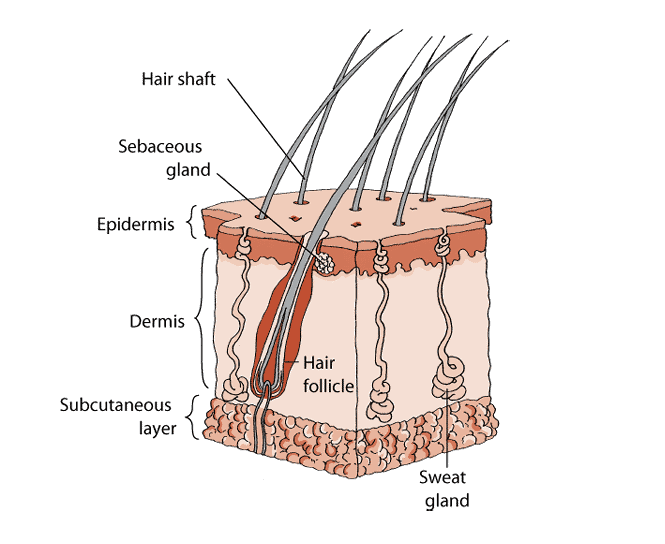
The horse’s skin is the largest organ in its body and acts as a first line of defence to bacteria that are present in the environment. It is water resistant to prevent it becoming water logged, and also to prevent the loss of valuable fluids from the body. Skin is made up of several layers; The Epidermis; The Dermis and The Subcutaneous layer.
The epidermis is the outer visible layer of the skin. It consists of flat, dead skin cells, which are continuously flaking off, the shed cells are replaced from the lower layers of the epidermis. The dead layer of cells at the skins surface is relatively hard and has a protective effect. The Dermis contains blood and nerve supply, beneath the dermis is a layer of subcutaneous fat, which helps to insulate the horse’s body from the cold.
Combined with the protective oils and the hair in the horses coat it offers a reasonably good protective layer. Horses and ponies bred to withstand harsh conditions tend to have much greasier and thicker winter coats than their more finely bred relatives. These thick greasy coats are designed to help protect the skin from penetration of water and heat loss. They also go some way to protect against scrapes and scratches, hence why it is not the norm to clip out the legs in a traditional hunter clip but to leave them on for protection.
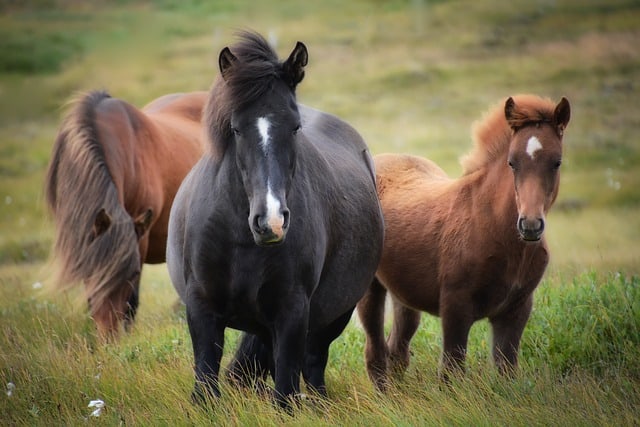
The surface of the skin has also got a considerable population of bacteria. These bacteria are of no challenge to a healthy horse if they remain on the outside of the skin. The problems start to occur if this protective layer is breached, something that happens far quicker in a horse with a fine coat.
This breach to the protective layer can often occur due to a minor, almost invisible, scuff or a more severe wound that penetrates the epidermis and exposes the dermis causing the blood vessels contained to be damaged, resulting in a leaking of that precious red fluid called blood. The position and depth of the damage will denote how much blood is lost and what type. If no vessels are involved then tissue serum may be the only thing leaking but the barrier is still breached.
Wet Conditions Weaken the Skin.
In wet conditions the skin becomes water logged and softens a bit like when you’re hands are in water for too long and your fingers become white and wrinkly. This weakens the protective barrier and allows bacteria to enter the softened skin and once inside they cause an infection.
Enter the vilan; Dermatophilus congolensis!
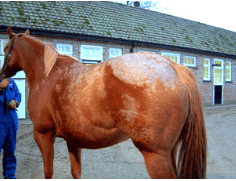
In the case of winter skin infections such as pastern dermatitis, more commonly called mud rash, and rain scald, the most readily attributed culprit to cause infection is the bacteria Dermatophilus congolensis. A nasty little bacterium that can cause, not only, mud rash and cracked heals but is also responsible for rain scald. However it is not the only culprit and Staphylococcus and Pseudomonas bacteria can contribute, as well as horses suffering from mites and fungal infections.
Dermatophilus congolensis can remain dormant from year to year and the horse will not become immune to its attack, it is also contagious and can be passed from contaminated equipment such as clippers or boots that are not cleaned properly or from scabs shed from an infected animal. It can be concentrated in certain soils and sandy soils can cause scratches to the skin and allow it to gain entry, as can sand surfaces.
The dilemma. A lose, lose situation.
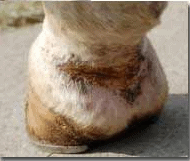
Horses with clipped legs are more prone to scratches but horses with hairy legs take longer to dry and suffer soft skin due to water being retained against the skin. Hence you have A lose, lose situation.
In the case of rain scald horses with fine coats are more prone to suffer especially if using trees for shelter as the large drops of water that fall through the leaf canopy are heavier than the average rain drop and penetrate the coat to skin level, thus softening the protective barrier of skin quicker. Rugged horses are not immune as non breathable rugs can protect from the rain but can cause the horse to sweat on mild days, the sweat can’t evaporate due to the rug and the skin is wet for long periods of time.
Tell tale signs of trouble.
Early signs of mud rash are generally seen on the back of the pastern, skin becomes inflamed and thickens before lesions appear and these can progress up the leg. The horse may become lame and swelling, due to lymphatic fluid, can occur. There may be some lifting of hair and leakage of serum that dries and crusts harbouring the bacteria underneath. With rain scald the tufts of hair are often raised with pussy scabs at the base. As the bacteria are anaerobic these scabs and crusts act to protect the bacteria from oxygen in the air and it continues to thrive. Harsh removal can lead to scaring and growth of white hair.
The solution.
It is important to keep the skin dry in all cases, if washing is necessary as part of the treatment, then ensure thorough drying after.
Treatment can vary on a case by case basis. Generally there are certain protocols that would hold true to all cases.
It is important to keep the skin dry in all cases, if washing is necessary as part of the treatment then ensure thorough drying after. If creams are applied over wet skin and hair this can exasperate the situation. In the case of mud rash the best way to achieve this is to stable the horse on clean dry bedding. Ammonia from dirty beds can aggravate or even cause the condition. If it’s rain scald then either bring the horse in and treat it or put a breathable rug on of a weight reflective of the temperature.
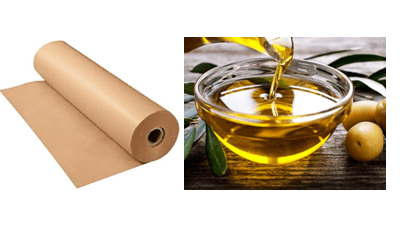
To allow air to the skin the scabs need to be removed. Dispose of them carefully so as not to spread the bacteria they contain. This could take a few attempts and you may need to poultice the area to effectively soften the scabs before removal.
As an alternative I have used brown paper and olive oil bandaged on to help soften the scabs, but it needs to be washed off between treatments to be effective. You may need to clip the hair but again clean the clippers thoroughly after.
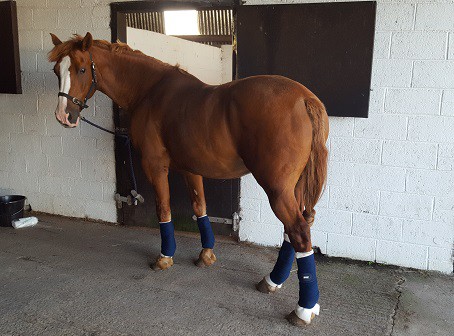
Remember to wash all grooming brushes and tack with a suitable anti bacterial wash. The same goes for rugs used on a horse with rain scald.
Once the scabs are gone then treatment can begin to kill the bacteria, washing with a mild anti bacterial wash such as a chlorhexidine or an iodine based solution. The skin should be dried well after washing. Paper towels are useful if you don’t have access to unlimited hand towels and a washer dryer.
With Rain Scald or Mud Rash, some stubborn cases require prescribed anti inflammatory and antibiotic to work at a systemic level. Remember once your horse has this condition Treatment may take several weeks to be effective.
Application of antibiotic cream can be of value once the scabs are removed some stubborn cases require prescribed anti inflammatory and antibiotic to work at a systemic level.
Treatment may take several weeks to be effective. In cases where there is considerable damage to the skin and there is scar tissue it can cause the horse to be more prone to infection than normal healthy skin.
Prevention is better than Cure.
Unfortunately we can’t control the rain and wet but there are things that are within our power to help prevent infection.
- For rain scald, rug horses with rain sheets that have a wick-away lining, prior to the animal showing signs of infection.
- Keep rugs appropriate to the temperatures as they fluctuate. This may require swapping from a day to a night rug, It is important to remove the rug and check the horse anyway. I have seen linseed oil applied to the backs and rumps of riding school horses living out to help waterproof the coat repel rain, this is only of use if the skin is perfect rather than as a treatment.
- Try not to create unnecessary poached conditions in paddocks where horses have to stand in wet muddy conditions.
- Keep stock numbers low and feeding points away from gate ways and water sources. Move feeding areas regularly.
- Rotate paddocks to prevent poaching or consider using temporary fencing to keep horses out of these areas if they get poached.
- Stable horses on clean, soft, dry bedding.
- Ensure the legs are kept clean and dry as possible.
- Avoid over washing of legs and if washing is necessary, a full wash with a good rinse is essential. You are far worse to half wash and wet the legs but leave dirt behind.
- Dry wet legs thoroughly and consider using correctly applied bandages to help dry the legs. Knitted bandages are best with a breathable fibre. We always used to put straw under to allow air to circulate and moisture to evaporate. Ensure they wick away moisture and not encourage the leg to sweat.
- Ensure boots and legs are clean and dry before applying them, make sure they are a good fit and won’t rub and allow infection to enter.
- Remember to be observant and don’t ignore a small scab as it could lead to weeks of treatment.
- Trim, but don’t clip, excess feather in working animals where possible. This will allow better observation of the skin and allow the legs to dry quicker.
Final Note
It’s very tempting to scratch at rain scald scabs with your nails but you run the risk of picking up the bacteria and passing it to the next horse you scratch.
Remember Dermatophilus congolensis on rare occasions can affect humans, so wear surgical gloves if treating infected cases, dispose of scabs, hair and dressings properly and always disinfect equipment that has been used.
